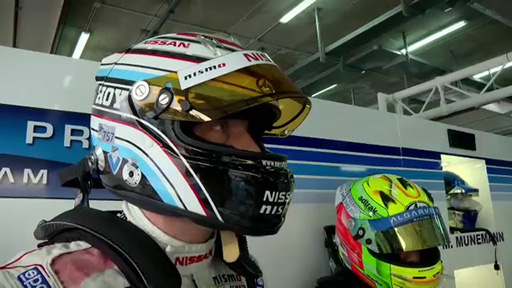1 Feedback in a motor racing team
In Session 1, you saw Chris Hoy competing in a motor racing team. The activity below has a focus on the communication in a training and learning situation. In this next video, Chris Hoy and colleagues are preparing for the Le Mans 24-hour race, in which drivers change over many times during the race.
Activity 1 Feedback in a motor racing team
Here, the team principal (TP), gives feedback to a member of his pit-crew about how to assist Chris Hoy in driver changeovers. Chris Hoy (who is wearing a helmet) also gives his input. Watch the video and respond to the following questions – however, be warned that there is some potentially offensive language and behaviour in the clip so you should be careful where you watch the clip in case it is heard by others.

Transcript
- Comment on the potential impact of this communication exchange on the unnamed pit-crew member and other team members, including Chris Hoy.
- How could the TP improve his communication based on what you have learned so far?
Discussion
- Here are some of the impacts that you may have noticed. For the pit-crew member, criticism in public is potentially humiliating and he is less likely to speak up again after he is told, ‘don’t argue, just do as you are told and you’ll learn’. He chooses to remain silent thereafter, although it is clear from his non-verbal communication that he is annoyed.
For Chris Hoy and other team members, the impact is that they are unlikely to challenge the TP in public for fear of similar treatment. However, although Hoy does try to explain how an approach that avoids shouting might yield better results this is also dismissed: ‘I don’t want to hear excuses, I want to see people pushed’. At the end of the video, Hoy provides subtle non-verbal support to the castigated pit-crew member through gesture and touch.
- One of the main things the team principal (TP) could consider is the benefit of remaining calmer and controlling his emotions under pressure. At the moment, this clouds his interactions with others and has an impact on how it makes others feel. His self-awareness of his harsh communication behaviour and pushing others probably arises from his past experiences and immersion in the motor sport environment; that said, others may not agree with his view of ‘learning’. He would benefit from viewing this incident played back to him, along with having a dialogue with a mentor he respects. An ongoing discussion and reflection with a mentor about the possible role of building rapport and trust in coaching and the overall team environment would be valuable.
In the next section, you will explore more about the influence of the workplace environment, sometimes called culture, which shapes and constrains behaviour and communication practices.
